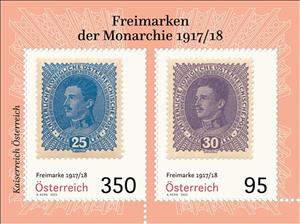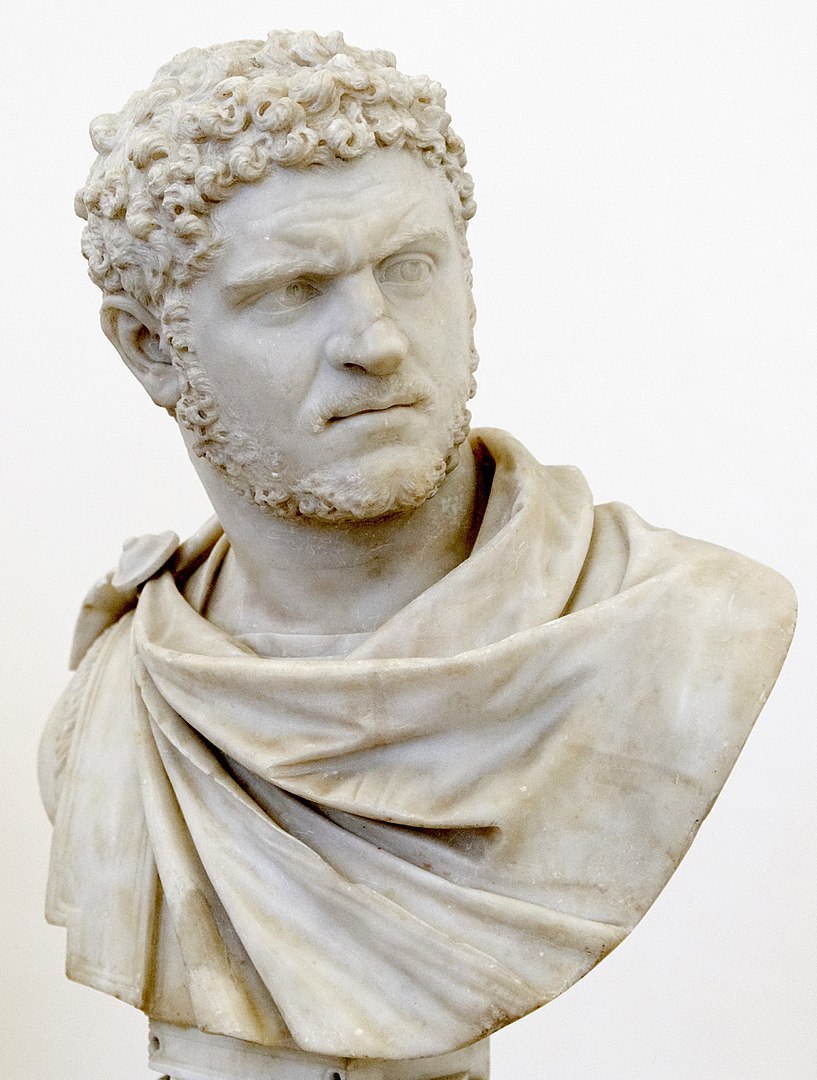Souvenir Sheet: Karl I issue of 1917-1918 (Austria 2025)
Karl I issue of 1917-1918 (Austria 2025)
07 March (Austria ) within release Stamp Issues of the Austrian Monarchy (2016-) goes into circulation Souvenir Sheet Karl I issue of 1917-1918 face value 445 Euro cent
| Souvenir Sheet Karl I issue of 1917-1918 in catalogues | |
|---|---|
| Colnect codes: | Col: AT 2025.03.07-01 |
Souvenir Sheet is horizontal format.
Also in the issue Stamp Issues of the Austrian Monarchy (2016-):
- Stamp - 25 Heller Karl I stamp of 1917 face value 350;
- Stamp - 30 Heller Karl I stamp of 1917 face value 95;
- Souvenir Sheet - Karl I issue of 1917-1918 face value 445;
Souvenir Sheet Karl I issue of 1917-1918 it reflects the thematic directions:
The word emperor (from Latin: imperator, via Old French: empereor) can mean the male ruler of an empire. Empress, the female equivalent, may indicate an emperor's wife (empress consort), mother/grandmother (empress dowager/grand empress dowager), or a woman who rules in her own right and name (empress regnant or suo jure). Emperors are generally recognized to be of the highest monarchic honour and rank, surpassing king. In Europe, the title of Emperor has been used since the Middle Ages, considered in those times equal or almost equal in dignity to that of Pope due to the latter's position as visible head of the Church and spiritual leader of the Catholic part of Western Europe. The emperor of Japan is the only currently reigning monarch whose title is translated into English as "Emperor"
Famous People refers to the fame and public attention accorded by the mass media to individuals or groups or, occasionally, animals, but is usually applied to the persons or groups of people (celebrity couples, families, etc.) themselves who receive such a status of fame and attention. Celebrity status is often associated with wealth (commonly referred to as fame and fortune), while fame often provides opportunities to make money.
King is the title given to a male monarch in a variety of contexts. The female equivalent is queen regnant (while the title of queen on its own usually refers to the consort of a king). In the context of prehistory, antiquity and contemporary indigenous peoples, the title may refer to tribal kingship. Germanic kingship is cognate with Indo-European traditions of tribal rulership (c.f. Indic rājan, Gothic reiks, and Old Irish rí, etc.) In the context of classical antiquity, king may translate Latin rex or either Greek archon or basileus. In classical European feudalism, the title of king as the ruler of a kingdom is understood as the highest rank in the feudal order, potentially subject, at least nominally, only to an emperor (harking back to the client kings of the Roman Empire). In a modern context, the title may refer to the ruler of one of a number of modern monarchies (either absolute or constitutional). The title of king is used alongside other titles for monarchs, in the West prince, emperor, archduke, duke or grand duke, in the Middle East sultan or emir; etc. Kings, like other royalty, tend to wear purple because purple was an expensive color to wear in the past.



